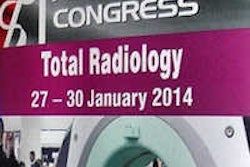Dear AuntMinnie Member,
The U.S. could save billions of dollars each year by adopting more restrictive criteria for mammography screening. But should it?
That's the question raised by a new study published this week in the Annals of Internal Medicine. In it, researchers analyzed the costs involved in providing different levels of breast screening, with options ranging from annual mammograms to screening every two years.
The analysis found that the U.S. would save billions by screening women less often, and the group recommends using the controversial 2009 guidelines published by the U.S. Preventive Services Task Force as a model.
But the study is drawing fire from mammography proponents, who charge that it ignores the thousands of lives saved through more frequent screening. Mammography at the more frequent screening rate already meets established criteria for a cost-effective intervention, they say. Read more by clicking here.
In other news, research from Germany indicates that a new form of digital mammography called photon-counting mammography could be superior to conventional digital systems.
The researchers analyzed a photon-counting unit in a real-world screening program with more than 1 million patients. They found that the system had higher cancer detection rates and delivered lower radiation dose than other digital mammography systems used. Read more by clicking here, or visit our Women's Imaging Digital Community at women.auntminnie.com.
NY Times op-ed revives radiation debate
In other news, another controversy erupted late last week, this one in the form of an op-ed piece in the New York Times that again took modern medicine to task for overuse of CT scanning. With the provocative headline "We are giving ourselves cancer," the article reiterated the link between CT overuse and cancer -- and even death -- in patients.
The authors postulate that the boom in CT scanning has occurred in part due to economic incentives for physicians that reward more scanning, and they decry the lack of guidelines on what constitutes the correct radiation dose for medical imaging scans. They call for more stringent regulation that would include requirements for dose tracking before imaging facilities can be accredited to perform CT scans.
But like this week's mammography study, the New York Times op-ed is also drawing sharp criticism -- so much so that the newspaper closed comments on the article after receiving nearly 250 posts in three days. While many pundits agreed that it's legitimate to question overuse of CT, some posited that the sensational nature of the article's headline would scare off patients and obscure the many clinical benefits that derive from the appropriate use of CT.
What do you think? Read the article in our CT Digital Community by clicking here, and visit the (still open) thread in our Forums to debate the issue.



















